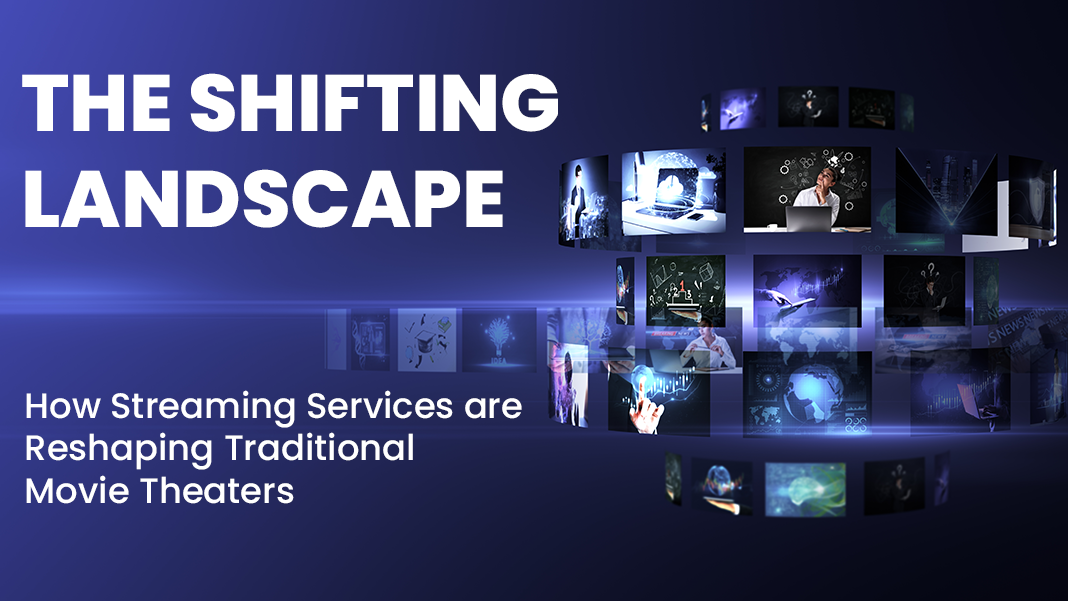From Silent Films to Virtual Reality: The Evolution of Cinema through Technological Innovation:
Cinema has undergone a remarkable transformation since its beginnings in the late 19th century. What initially started as a simple novelty has now become a thriving industry that generates billions of dollars annually. Technological advancements have played a pivotal role in shaping the Evolution of Cinema, from the era of silent black-and-white films to modern-day blockbusters.
The advent of digital photography, advancements in data storage, and the rise of the internet have ushered in the era of digital filmmaking. This transition has been witnessed by all of us. While the debate between “Film Vs Digital” may continue for some time, with certain industry veterans expressing concerns about quality and conversion issues, it is important to acknowledge that film technicians worldwide have been adapting to these changes. The impact of digital technology has both positive and negative aspects, but its transformative effect cannot be overlooked. Aspiring filmmakers in the present day need to stay up-to-date with the latest developments and understand the evolution of the art of filmmaking over the past 100-150 years. Many experts consider the current digital era as one of the most significant transformations in the history of cinema.
Early days of cinema:
In the early days of cinema, films were basic, devoid of color, and without sound. Shot on celluloid film, filmmakers had to carefully manage the length of their shots as they were limited by the film’s capacity. Sound was introduced in the late 1920s, revolutionizing storytelling by incorporating dialogue, music, and sound effects. However, the bulky sound equipment constrained camera movement, resulting in static and less dynamic films, and this is a big Evolution of Cinema.
The advent of color in the 1930s allowed filmmakers to create visually stunning movies with vibrant hues and atmospheric landscapes. Despite the advantages, colorization techniques often produced unnatural and unrealistic results when applied to black and white films.
The Birth of Sound:
Additionally, computer-generated imagery (CGI) emerged as a powerful tool, enabling the creation of previously unimaginable worlds and creatures.
Social media platforms, such as Twitter and Instagram, have had a significant impact on the film industry by connecting filmmakers directly with audiences and facilitating film promotion. They have also revolutionized film marketing strategies, with studios utilizing social media to build anticipation through teasers and trailers.
The evolution of colour:
These platforms have also disrupted traditional distribution models, allowing filmmakers to reach audiences directly without the need for theatrical releases. Streaming services have empowered filmmakers, granting them creative freedom and resulting in the production of independent films and niche content.
There has been a growing demand for diversity and representation in cinema, prompting filmmakers to tell stories that reflect a broader range of experiences and backgrounds. This demand has given rise to a new generation of filmmakers from underrepresented communities, leading to critically acclaimed films that celebrate diversity.
The digital revolution:
Looking to the future, cinema is poised for further advancements. VR provides immersive environments where viewers can interact with the film, while AR allows for interactive experiences with characters and objects.
How Technology Changed the Film Industry:
Technology has revolutionized the film industry, transforming the entire movie-making process and changing how audiences consume films. In the past, cameras required large crews and heavy equipment, making tasks like aerial shots challenging. Editing involved physically cutting and pasting film together, which was time-consuming and inefficient. Moreover, the image quality was often low.
However, modern technology has brought about significant improvements. Lightweight cameras now capture clear, high-quality images, enabling filmmakers to achieve shots that were once unimaginable. Additionally, the advent of cloud technology has simplified the editing process. Geographically dispersed teams can collaborate on film projects from anywhere, making filmmaking more accessible and efficient.
Audiences no longer need to rely on limited theater showings to watch movies. The emergence of on-demand services, streaming platforms, and television has given viewers the flexibility to enjoy their favorite films at their convenience, regardless of location.
Technological advancements have propelled the film industry from the era of silent, black-and-white films to the era of high-definition movies. These advancements create immersive experiences that transport audiences into the heart of the action. In a relatively short span of time, technology has reshaped the film industry, making it more accessible, visually impressive, and convenient for both filmmakers and viewers alike.
The digital era of filmmaking has brought about major changes in various aspects of the industry:
Production methods have seen a significant shift with the widespread use of digital cameras. Digital cameras, capturing images in digital format instead of on film, have become the preferred choice for filmmakers worldwide. Over 90% of Hollywood films are now shot using digital cameras due to their lower production costs. This shift has democratized filmmaking, allowing aspiring filmmakers to create movies using even simple equipment like mobile phones and handy-cams. The capabilities of digital technology have broken conventional boundaries and opened up new possibilities.
Change in Post- Production methods: Post-production has also been transformed by digital technology. In the past, creating visual effects and editing were labor-intensive tasks. However, advanced film-editing software has made it possible to seamlessly integrate visual effects into footage captured by digital cameras. This advancement has given rise to the demand for skilled professionals in the field of visual effects.
Evolution of Cinema in past years
Change in Screening Methods: Screening methods have undergone significant changes as well. The handling and storage of physical film canisters used to be a cumbersome task. With digital technology, movies can be stored and transported more easily using servers, hard disks, and video tapes. Digital projectors have replaced traditional film projectors, enabling theaters to screen movies digitally. Additionally, the internet has provided alternative platforms for filmmakers to showcase their work. Online platforms and social media allow filmmakers to reach a wider audience geographically, expanding the potential viewership of their films.
Overall, the digital era of filmmaking has revolutionized the industry, impacting production, post-production, and screening methods. The accessibility and cost-effectiveness of digital technology have democratized the filmmaking process, empowering filmmakers of all backgrounds to bring their visions to life. Also OTT platform have change the Evolution of Cinema
Conclusion:
In summary, the history of cinema is marked by continuous innovation driven by technology. From silent films to virtual reality experiences, advancements have shaped the way movies are made and consumed. As we look ahead, the future of cinema promises even more exciting and unpredictable possibilities as new technologies and techniques emerge.









